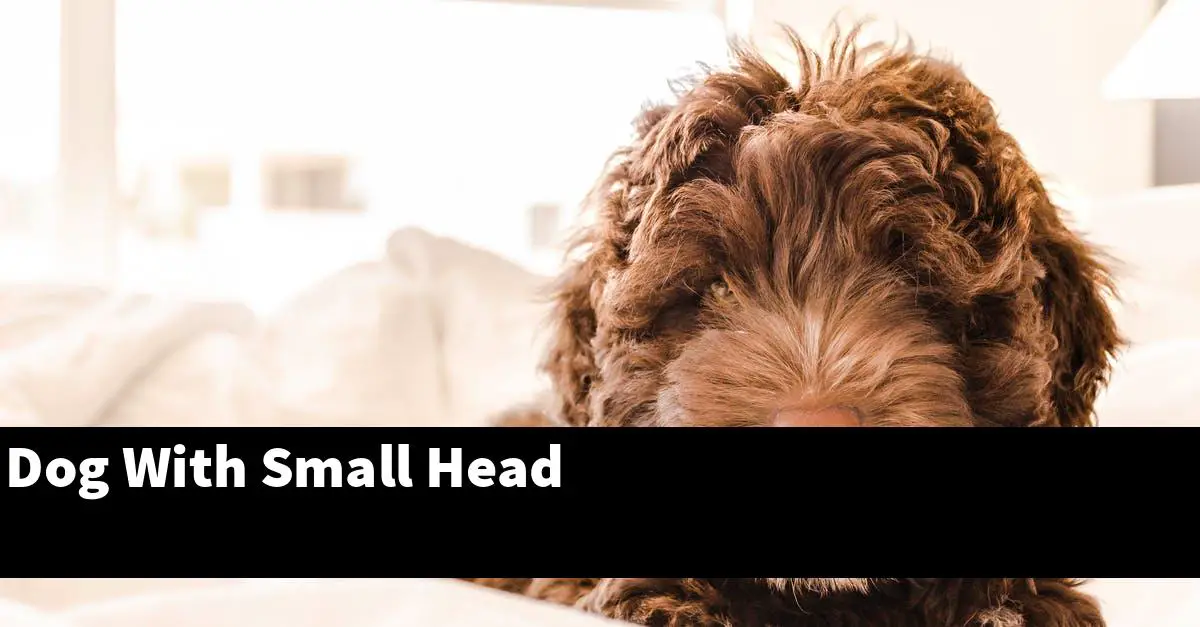The dog with a small head is a toy dog breed. The small head is due to a genetic mutation. Toy dogs are bred for companionship and are typically smaller than other dog breeds.
The article will be discussing the reasons why a dog’s head may appear small.
Table of Contents
Does your dog have a small head?
A small head in dogs is often the result of a condition called microcephaly. This is a congenital condition, meaning it is present at birth, and is characterized by a head circumference that is significantly smaller than normal. Microcephaly can be caused by a number of things, including genetic abnormalities, infections, and exposure to toxins. In some cases, the cause is unknown.
Dogs with microcephaly often have other health problems as well, including seizures, mental retardation, and hydrocephalus (a build-up of fluid in the brain). Treatment for microcephaly is often symptomatic, and may include medication for seizures or other health problems. In some cases, surgery may be necessary to relieve pressure on the brain.
What causes a dog to have a small head?
There are a few possible reasons for why a dog might have a small head. One reason could be that the dog is a toy breed. Toy breeds are typically smaller in size overall, including having a smaller head. Another possibility is that the dog is a brachycephalic breed. Brachycephalic breeds are breeds with a shortened skull, which can result in a smaller head size. These breeds include Bulldogs, Pugs, and Shih Tzus, among others. Finally, it is also possible that the dog has a condition called microcephaly. Microcephaly is a condition where the head is smaller than would be expected for the body size. This can be due to a variety of causes, including genetic defects, prenatal exposure to certain toxins, or infections during pregnancy. If you are concerned that your dog has a small head, it is best to talk to your veterinarian to rule out any potential medical causes.
How does a small head affect a dog’s health?
A small head can affect a dog’s health in a number of ways. First, a small head may be more susceptible to injury. Second, a small head may make it more difficult for the dog to breathe. Third, a small head may make it more difficult for the dog to eat. Fourth, a small head may make it more difficult for the dog to see. Fifth, a small head may make it more difficult for the dog to hear. Sixth, a small head may make it more difficult for the dog to smell. Finally, a small head may make it more difficult for the dog to balance.
Are there any health benefits to having a small head?
A small head circumference is usually a result of a genetic condition and is not something that can be changed. There are, however, some health benefits associated with having a small head. For example, people with small heads are less likely to suffer from migraines and tension headaches. They are also less likely to develop Alzheimer’s disease and other forms of dementia. Additionally, small-headed individuals tend to have higher IQs than those with larger head circumferences.
Which dogs have small heads?
There are a few breeds of dogs that have small heads in comparison to their body size. These breeds include the Affenpinscher, the Brussels Griffon, and the Toy Poodle.
The Affenpinscher is a small, sprightly dog that is known for its monkey-like face. The breed’s small head is due to its short muzzle. The Affenpinscher is a toy dog breed and typically weighs between 7 and 10 pounds.
The Brussels Griffon is another small dog breed with a small head. The breed gets its name from the city of Brussels, Belgium, where it was developed. The Brussels Griffon is a toy dog breed and typically weighs between 8 and 10 pounds.
The Toy Poodle is a small dog breed that is known for its puffy coat and curly hair. The Toy Poodle typically weighs between 4 and 6 pounds. The breed’s small head is due to its short muzzle.
What kind of dog has a square head?
There are a few dog breeds that have square-shaped heads, including the Boxer, the Bullmastiff, and the Cane Corso. These breeds were bred for certain purposes, such as hunting or guarding, and their square heads are a result of their purposeful breeding. Each of these breeds has a distinct set of characteristics that make them unique, but their square heads are one common trait.
What are the 4 skull types for dogs?
There are four types of skulls in dogs: brachycephalic, dolichocephalic, mesocephalic, and hydrocephalic.
Brachycephalic skulls are characterized by a short and broad skull, with a short muzzle. This type of skull is often seen in breeds such as the Bulldog, Pug, and Boxer.
Dolichocephalic skulls are characterized by a long and narrow skull, with a long muzzle. This type of skull is often seen in breeds such as the Greyhound and Whippet.
Mesocephalic skulls are characterized by a medium-sized skull, with a medium-length muzzle. This type of skull is seen in many mixed-breed or crossbreed dogs.
Hydrocephalic skulls are characterized by an abnormally large skull, with a very short muzzle. This condition is often seen in toy breeds such as the Chihuahua and Yorkshire Terrier.
What are the three types of head shapes in dogs?
There are three types of head shapes in dogs: round, square, and triangular. Round heads are the most common type, and are characterized by a round skull with a wide forehead. Square heads are less common, and are characterized by a square skull with a wide forehead. Triangular heads are the least common, and are characterized by a triangular skull with a narrow forehead.
Summary
:
A small head in dogs is often the result of a condition called microcephaly. This is a congenital condition, meaning it is present at birth, and is characterized by a head circumference that is significantly smaller than normal. Microcephaly can be caused by a number of things, including genetic abnormalities, infections, and exposure to toxins. In some cases, the cause is unknown.


